Scoliosis Chiropractor
What is Scoliosis?
Scoliosis is a condition in which the spine curves sideways in an abnormal “S” or “C” shape when viewed from the back. It can affect the spine in many ways, causing an uneven posture or changes in the spine’s appearance. The degree of curvature can vary and may remain stable or progress over time depending on the type and individual case. It can affect many systems of the body.
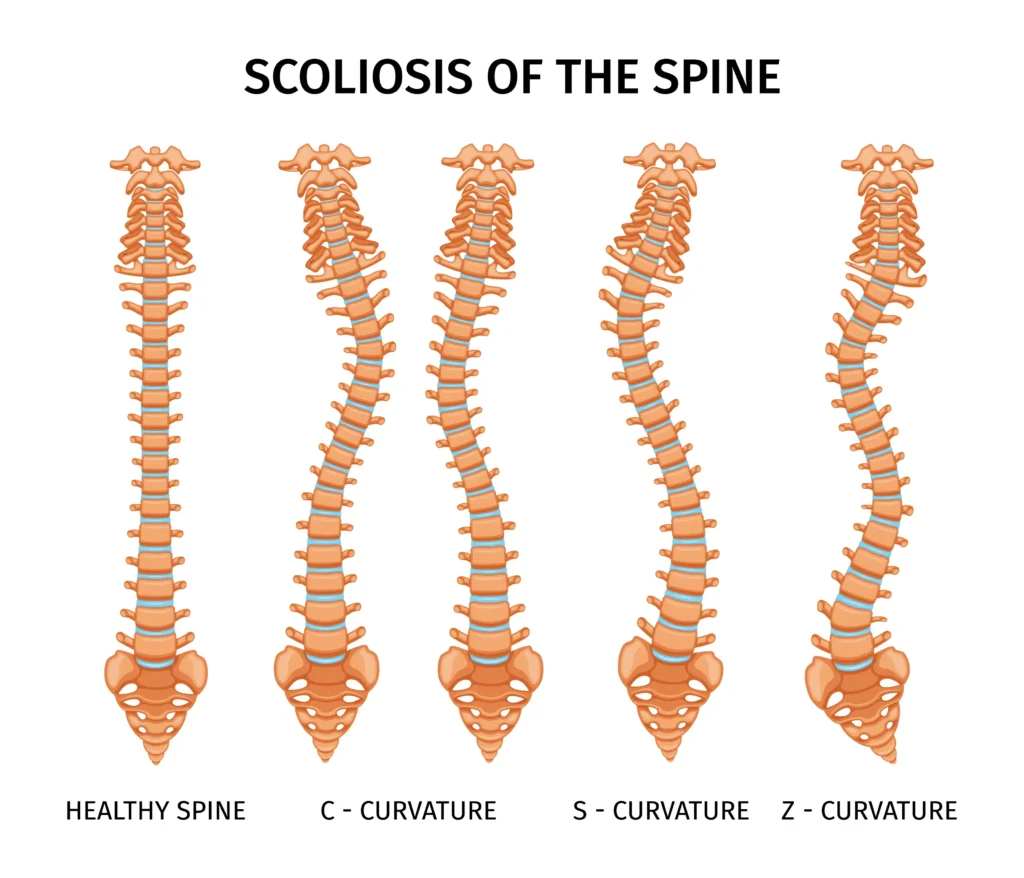
Symptoms of Scoliosis
One of the most noticeable signs of scoliosis is uneven shoulders or hips, where one side of the body appears higher than the other. This is caused by the spine’s sideways curvature.
In scoliosis, the spine’s rotation can cause one shoulder blade to stick out more than the other, especially when bending forward. This uneven appearance is because the rib cage shifts along with the spinal curve. This can cause pain, which can be treated by a chiropractor for shoulder pain.
The spinal curve and rotation can cause the ribs to stick out more on one side of the back or chest. This rib prominence becomes more noticeable when bending forward and is a result of how the spine twists.
An uneven waistline may occur when the spine curves sideways, pulling the torso slightly to one side. This can cause one side of the waist to appear flatter or more curved than the other.
Scoliosis can cause clothing to hang unevenly or shift to one side. This often happens because the spinal curve alters shoulder height or hip position, making shirts, jackets, or pants look off-center.
Scoliosis can place uneven stress on the spine and muscles, making it harder to sit or stand. Over time, this can cause muscle fatigue, stiffness, or a deep, persistent ache.
Neck pain caused by scoliosis often results from the spine’s misalignment putting extra stress on the neck and upper back muscles. As the body compensates for the curve, tension builds in the cervical spine, which can cause pain in the neck, which may be addressed by a chiropractor for neck pain.
Muscle spasms caused by scoliosis often happen when the muscles surrounding the curved spine work harder to stabilize the body. This can lead to tight, random contractions that cause sharp pain.
The uneven spinal curve can make it hard to stand up straight. Scoliosis can lead to muscle fatigue or strain as the body compensates, causing discomfort or pain when trying to stand tall.
Weakness or numbness in the legs may happen when scoliosis causes pressure on spinal nerves, especially in the lower back. This can mess with proper signaling, making the legs feel heavy, unresponsive, or tingly when walking or resting.
Fatigue often comes from the extra effort muscles must exert to support an imbalanced spine. Over time, this constant strain can cause overall tiredness, especially after standing, walking, or even just doing some daily tasks.
Scoliosis can limit movement in the spine, especially during bending or twisting. The uneven curvature may restrict how far you can move in one direction, making everyday tasks feel very uncomfortable or even painful.
Headaches related to scoliosis are caused by muscle tension and imbalances in the neck and upper back. As the body compensates, this strain can cause tension-type headaches or even migraines in some cases. Chiropractor for migraines may help.
In rare serious cases of scoliosis, severe spinal curvature may compress the spinal cord or nerves responsible for controlling bowel and bladder function. It can cause sudden incontinence or loss of control - an urgent medical issue that requires immediate medical attention.
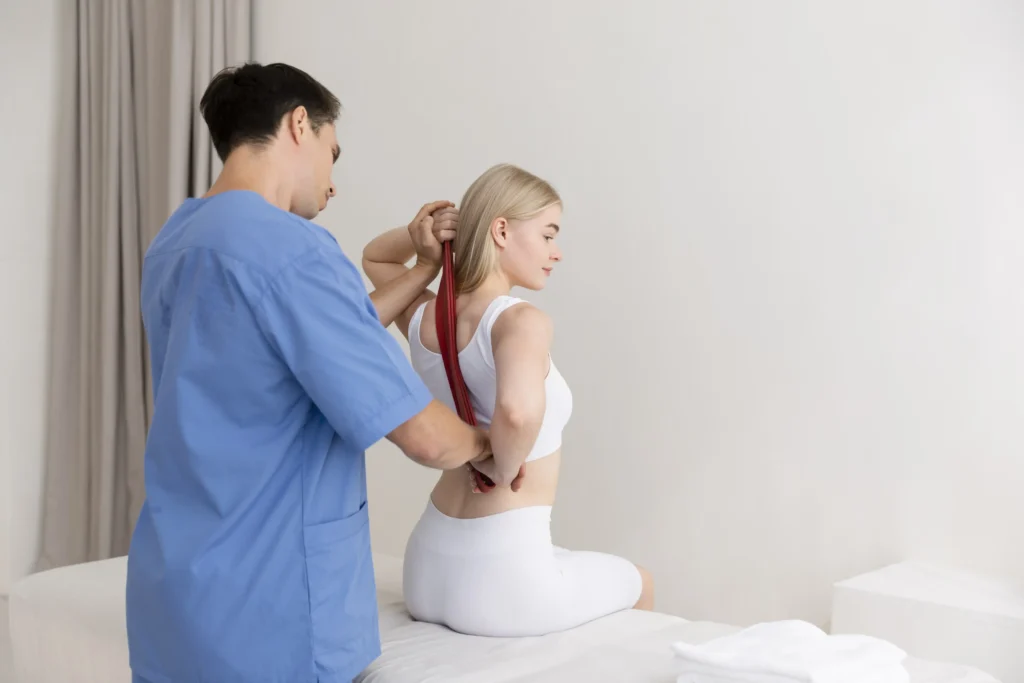
What Causes Scoliosis
- Idiopathic Scoliosis. The most common type, idiopathic scoliosis has no known cause and develops during adolescence during periods of rapid growth.
- Congenital Scoliosis. This form is present at birth and results from spinal abnormalities that develop in the womb.
- Neuromuscular Scoliosis. Caused by disorders that affect the nerves and muscles.
- Degenerative Scoliosis. Usually affects older adults, this type results from age-related wear and tear on the spine.
- Metabolic Scoliosis. Caused by metabolic disorders, this rare form involves abnormal bone development or density, affecting the spine over time.
- Tumors or Infections. Growths near or within the spine, or spinal infections, can cause curvature.
- Trauma to the Spine. Accidents or injuries that damage the spine can lead to curvature.
- Certain Medications. In rare cases, long-term medication use may interfere with bone growth or healing, contributing to issues in the spine.
Chiropractic Treatments for Scoliosis
These manual or instrument-assisted adjustments by a scoliosis chiropractor improve alignment and relax tight muscles.
Soft tissue work can help relax tight muscles, improve blood circulation.
Chiropractor for scoliosis gently stretches the spine to increase mobility between vertebrae and may help with stiffness in curved or rotated places.
A non-invasive chiropractic treatment for scoliosis that uses low-level light to trigger soft tissue healing, treat inflammation, and ease pain around the spine.
Chiropractor for scoliosis helps retrain muscle memory and support the brain’s connection.
Hands-on adjustments done by a scoliosis chiropractor based on the patient’s spinal curve can help joints, ease pressure, and make the spine work better overall.
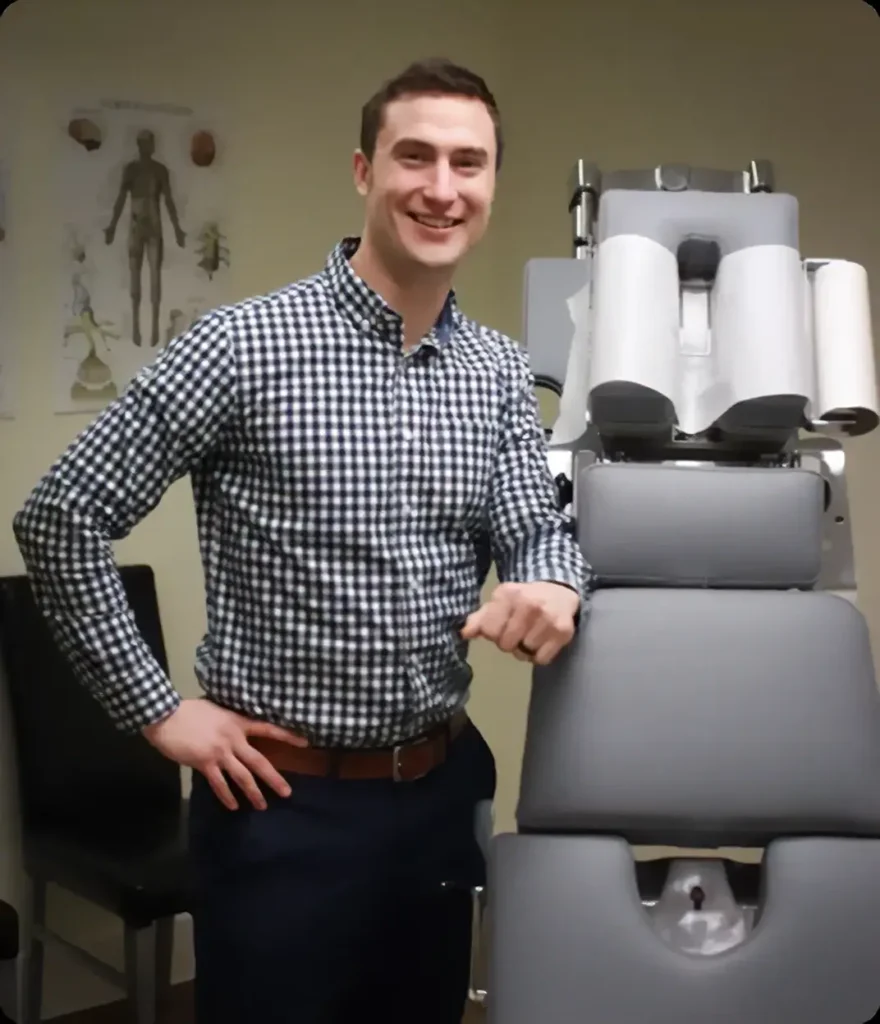
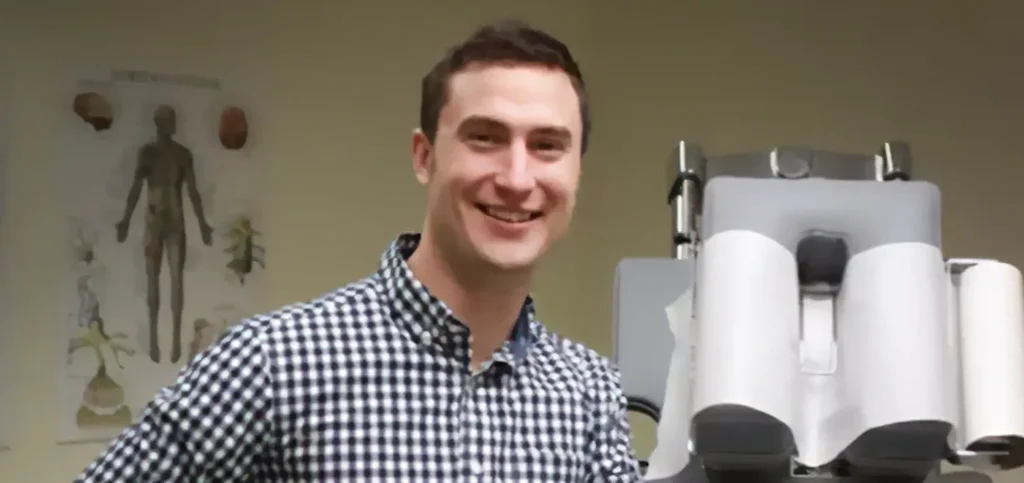
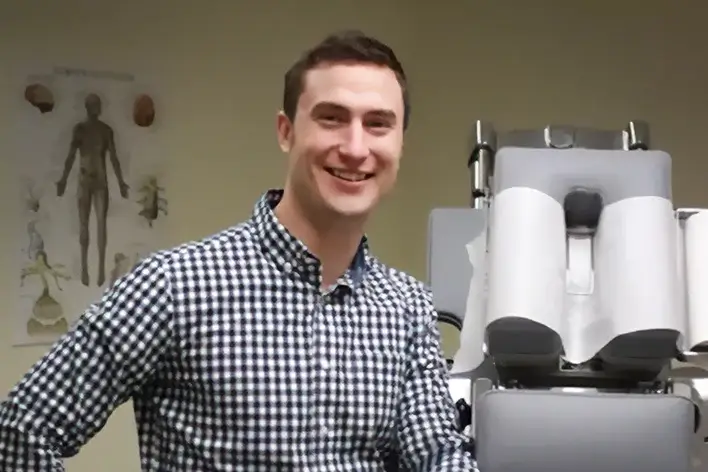
Get Effective Scoliosis Treatment at Payson Salem Chiropractic in Payson, Utah
If you’re living with scoliosis, you don’t have to deal with it alone. At Payson Salem Chiropractic, we help ease pain, improve mobility, and support better posture with time. We don’t rush endless appointments or treat everyone the same. Your chiropractic care for scoliosis is based on your spine and how your body responds.
Relief is often the first step, but our main goal is long-term health. We teach patients why regular spine care helps prevent future pain and keeps the body moving well. It’s not about feeling better here and now, which may not always be possible, it’s about staying healthier overall.
As a trusted Payson chiropractor, we focus on safe, natural, non surgical scoliosis treatments to help you feel better. Call today to schedule your visit and start your scoliosis care with a team that actually cares.
Need a Chiropractor for Scoliosis? We Can Help
Discover how expert care can bring you real relief. Book your appointment today and take the first step toward feeling better
Review about
Scoliosis Chiropractor in Payson, UT
Posted onTrustindex verifies that the original source of the review is Google. Dr. Jon Krogue has some of the best bedside manner, touch, energy and tone about him. He is compassionate, kind and did such a great job adjusting my wrists, ribs, hips, back, neck, ankles and toes! I would whole heartedly trust him to adjust my children if I had any. Though, personally I'm not sure if I'll be going back regularly for myself because although he did his best to make sure I felt taken care of, I felt rushed. I love that Dr. Jon knows his value and what his amazing adjustments are worth. As a nearly retired LMT of 10 years, I have been paid $15 for an hours work of manual labor at Massage Envy too often, and now my body is paying for it. I would definitely go back Dr. Jon if I needed him to give me a hand fixing something that I felt was really bothering me. I'm looking for a very in depth treatment, and am now convinced that I might only be 100% $atisfied with my experience if I take a trip to Florida to meet the amazing Dr. Mondragon. Talk about expensive! Anyways, FIVE STARS! Thank you so much Jon, I'll see you when I see you.Posted onTrustindex verifies that the original source of the review is Google. Dr. Krogue at Payson Salem Chiropractic is the only Chiropractor that has been able to adjust my neck and I don’t get a headache afterwards.Posted onTrustindex verifies that the original source of the review is Google. I've had a fantastic experience with Dr. Krogue at Payson Salem Chiropractic. He's knowledgeable, skilled, and genuinely cares about his patients. Appointments are easy to schedule, run on time, and he's very accommodating. Most importantly, I'm feeling a real difference—my pain is subsiding, and I finally feel like I'm on the right track to recovery. I highly recommend Dr. Krogue to anyone seeking effective, compassionate chiropractic care!Posted onTrustindex verifies that the original source of the review is Google. This is my first experience with a chiropractor, and I am very happy with the results! Dr. Krogue’s Adjustments are Very gentle but effective! I don’t think my posture has been this improved for years!Posted onTrustindex verifies that the original source of the review is Google. Jon is the best! He is not only amazing for my health, but also my young kids. I brought my 5 year old daughter in, and he was so great! she was afraid to get on the table, but by the time he was done, she was excited to come back :D And on top of that, he knows the human body so well. I had a shoulder injury that was giving me trouble, and he quickly gave expert tips and exercises for me to do. and they helped a ton. Overall, he is simply amazing.Posted onTrustindex verifies that the original source of the review is Google. Great visit! Extremely thorough and great at what he does! Would recommend to anyone!Posted onTrustindex verifies that the original source of the review is Google. Dr. Kroger is friendly and professional.Posted onTrustindex verifies that the original source of the review is Google. He was kind and very thorough. He found the area on my back that was hurting and targeted it. It was great. Highly recommend.
FAQs About
Scoliosis Chiropractor in Payson, UT
Can a Chiropractor Help With Scoliosis
Can a Chiropractor Diagnose Scoliosis
Can You Go to a Chiropractor If You Have Scoliosis
How Often Should You See a Chiropractor for Scoliosis
What Can a Chiropractor Do for Scoliosis
Contact Us
Please use this form for general information purposes only. DO NOT send personal health information through this form. Specific patient care must be addressed during your appointment.
